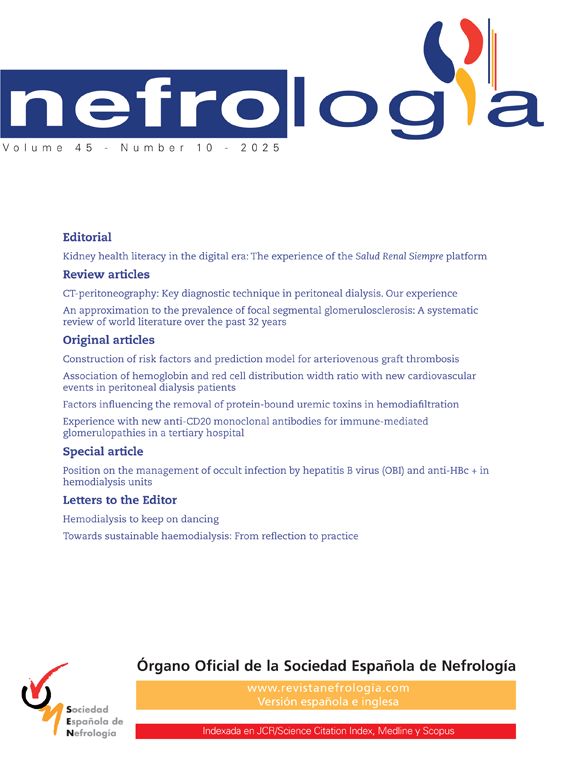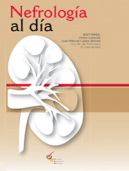THE PLOT: ACUTE KIDNEY INJURY
Most of the mass of the kidneys is composed of tubular cells. Loss of renal tubular cells characterizes both acute and chronic failure of renal function1. Tubular cells may be lost by shedding, death or differentiation into fibroblasts.
In human studies tubular cell death was the best histopathological correlate of renal dysfunction during acute kidney
injury (AKI).2,3 In addition sublethally injured tubular cells secrete mediators of inflammation that further aggravate AKI. However, the factors that modulate tubular cell injury and the interplay between different factors is incompletely understood. In fact, AKI is a paradigmatic situation in which an insufficient understanding of the mechanisms of injury precludes the implementation of effective physiopathology-based approaches for prevention and treatment. Numerous factors contributing to injury have been identified and many of them have been shown to be effective targets in animal models of injury.4 However the few attempts to translate this information to the clinical situation have failed. We now review the evidence involving a novel cytokine-ligand pair, TWEAK and Fn14, in AKI.5-7 We feel that they may become important targets in the treatment of AKI because they are «team players», they behave as «facilitators» that amplify injurious responses initiated by other stimuli. Thus their targeting has the potential to dampen injury induced by a wide range of stimuli.
THE STARS: TWEAK AND Fn14
Tumor necrosis factor-like weak inducer of apoptosis (TWEAK, Apo3L, TNFSF12) is a member of the tumor necrosis factor superfamily (TNFSF) of structurally-related cytokines8 (fig. 1). The human TWEAK gene is located at
chromosome 17 and encodes a 249- amino acid (aa) type II transmembrane glycoprotein (30 kDa). The intracellular domain contains a putative serine phosphorylation site. The extracellular domain contains the receptor-binding site. TWEAK may be expressed as a membrane-bound protein (mTWEAK) and as a 156-aa, 18kDa soluble protein, (sTWEAK) that results from proteolysis of mTWEAK.9,10 mTWEAK, but not sTWEAK, may enter the cell nucleus, although the relevance of this observation is unknown.11
The TWEAK receptor was initially and erroneously reported to be the tumor necrosis factor receptor superfamily
(TNFRSF) member death receptor 3 (DR3).12 In 2001 the TWEAK receptor was cloned and shown to be the previously described human fibroblast growth factorinducible 14 (Fn14, TNFRSF12A)13-15 (fig. 1). The human Fn14 gene is located at chromosome 16 and encodes a 129-aa type I transmembrane protein (14 kDa). Fn14 is processed into a 102- aa mature protein, making it the smallest TNFRSF member to date.9,16 The Fn14 extracellular domain (53-aa) contains the TWEAK-binding site.17 The intracellular domain (29-aa) contains a
TNFR-associated factor (TRAF)-binding site with three potentially phosphorylated threonines. TRAF binding has been implicated in signal transduction.18 TWEAK trimerizes and binds to Fn14 monomers, promoting receptor trimerization and signal transduction.18-21
Although Fn14 was the only characterized TWEAK receptor, some TWEAK actions may be mediated independently
of Fn14.22 Indeed CD163 was recently shown to either act as a TWEAK scavenger in pathological conditions or serve as an alternate receptor for TWEAK in cells lacking Fn14/TweakR.23
Human and murine TWEAK are closely related, with a 93% homology in the receptor-binding domain. Furthermore,
human and murine Fn14 have a 90% homology in their overall sequences, human TWEAK can bind to murine
Fn14 and vice-versa.24 In fact this pathway is remarkably conserved throughout evolution and putative TWEAK and
Fn14 ESTs can be found in species as primitive as zebrafish.25 The phylogenetical conservation suggests an important biological role.
TWEAK is widely expressed, and can be found at high levels in pancreas, intestine, heart, brain, lung, ovary and
skeletal muscle, and at lower levels in liver and kidney.8,26 TWEAK mRNA levels were initially reported to be
reduced in mice with both acute (induced by lipopolysaccharide) or chronic (autoimmune pathologies like lupus
erythematosus or hemolytic anemia) inflammatory processes in numerous tissues and peritoneal macrophages.27 In the same line of evidence, normal human arteries release sTWEAK but sTWEAK release from atherosclerotic arteries is reduced.28 Low serum sTWEAK is a marker for subclinical atherosclerosis of potential clinical relevance.28 However, elevated TWEAK expression was found in other inflammatory conditions such as experimental autoimmune encephalitis. 29
By contrast to TWEAK, resting tissue levels of Fn14 are usually low. As an example, it is undetectable in normal
arteries.28 Fn14 initially was identified as an early response gene whose transcription was induced by FGF-1 (fibroblast growth factor-1) in fibroblasts.14 Numerous cell culture and in vivo studies have demonstrated rapid induction and increased expression of Fn14 upon activation of diverse cell types by multiple stimuli, as well as in vivo in the course of liver, artery, central nervous system or kidney injury or in tumor cells.19,16,13,30,31 It has been postulated that a reduced Fn14 expression limits the actions of TWEAK in healthy tissues and rapid and quantitatively important upregulation of this receptor sensitizes to TWEAK actions28,32 (fig. 2). This sensitization would promote TWEAK activity in the presence of only mildly increased or even reduced TWEAK expression.
In experimental models of AKI and autoimmune injury renal TWEAK and, more significantly, Fn14 expression is
upregulated.31,33 The potential sources of TWEAK in the kidney include infiltrating monocytes and T lymphocytes.34,35 In particular T cells from lupus patients express TWEAK.34 Other renal sources of TWEAK include tubular epithelial cells.31 In addition, mesangial cells also express TWEAK and Fn14.36 Defining the role of a pleiotropic cytokine such as TWEAK in AKI is a challenge that has been approached by functional studies in cell cultures and experimental models.32
THE ROLES: HEROES AND VILLAINS
Evidence suggests that TWEAK and Fn14 play a role in the pathogenesis of human diseases, including atherosclerosis, stroke, rheumatoid arthritis, autoimmune kidney injury, AKI and cancer.5-7,37,38,25 TWEAK stimulates, in a cell-type- and microenvironment-dependent fashion, cell proliferation,39-43 survival, 44 migration,41,45,46 cell growth9 and apoptosis.8,47-51 TWEAK can also promote22 or inhibit52-54 cell differentiation. Finally, TWEAK induces the expression of pro-inflammatory molecules. 8,27,36,41,45,55-58 In vivo, TWEAK can stimulate blood vessel formation (angiogenesis) 40,59 and regulates neurovascular unit permeability.60
A CROWDED PLACE: TWEAK AND INFLAMMATION
TWEAK promotes sustained NFκB activation in murine tubular epithelial cells. In tubular cells TWEAK increased
NFκB DNA-binding and transcriptional activity, IκB-α phosphorylation and RelA nuclear translocation via Fn14.32 As a consequence, TWEAK induced the mRNA expression and secretion of MCP-1, IL-6 and RANTES, which was prevented by the RelA inhibitor parthenolide. The effect of TWEAK on chemokines (previously known as intercrines), 61 such as MCP-1 and RANTES is particularly interesting as it allows the recruitment of further
inflammatory cells and amplification of inflammation.
TNFα, used as a control for NFκB activation, yielded a different pattern of NFκB DNA-binding complexes.32 This
suggests that TWEAK induces other biological responses also dependent on NFκB that differ from those elicited by
TNFα. Thus, TNFα and TWEAK would not be redundant cytokines in renal injury. In this regard, the persistent NFκB activation induced by TWEAK in tubular cells is consistent with the recently identified non-canonical NFκB activation, which is not activated by TNFα.62
Systemic administration of TWEAK activates kidney NFκB and has a proinflammatory effect in the renal tubulointerstitium characterized by increased MCP-1, RANTES and IL-6 mRNA.32 Immunohistochemistry showed that RelA translocated to the nucleus of tubular cells and that these cells were the main site of expression of MCP-1
and RANTES. The expression of chemokines by tubular cells was followed by increased renal expression of the
mRNA for the MCP-1 receptor, CCR2, which is expressed by macrophages, as well as by an increased number of
interstitial macrophages. This demonstrates that TWEAK induces tubulointerstitial inflammation in vivo. However, TWEAK alone did not modify serum creatinine.
TWEAK had recently been found to increase MCP-1 expression in cultured glomerular mesangial cells and to upregulate whole kidney MCP-1 mRNA.36 However, that report did not address whether there was a concomitant increase of chemokine protein, which were the cells responsible for mRNA expression and whether TWEAK elicited
renal inflammation. In fact, the context of the report (cell culture studies in mesangial cells) suggested that the site
of action of TWEAK would be the glomerulus. Our findings demonstrate that in normal kidneys TWEAK elicits
tubulointerstitial, but not glomerular inflammation.32 TWEAK contributes to glomerular injury when the Fn14 receptor has been previously upregulated locally by injurious stimuli.33
THE KILLING FIELDS
Apoptosis contributes to renal cell loss.63 In addition to nephrotoxins and other forms of cell stress,64,65 several
members of the TNF ligand superfamily induce apoptotic renal cell death, including TRAIL, FasL and TNF-α.66-68
The name TWEAK derives from its weak capacity to induce apoptosis. TWEAK frequently requires co-stimuli, such as IFNγ, to induce apoptosis. 35 However, TWEAK alone may induce apoptosis in primary neurons and mesangial cells and this effect is magnified in the presence of IFNγ.36,48 TWEAK also mediates activated CD4+T cell-induced apoptosis of monocytes and macrophages (T cells presumably release concomitantly other mediators).69 By contrast, non-stimulated tubular epithelial cells are resistant to TWEAKinduced apoptosis and the lethal effect only becomes apparent in the presence of several (not one) inflammatory mediators released during AKI, such as IFNγ and TNF-α.31,70,71 This requirement for both IFNγ and TNFα in order to sensitize to cell death in the presence of
TWEAK is novel. TNFα/IFNγ increased Fn14 expression in tubular cells. Upregulation of Fn14 expression may underlie the sensitization to apoptosis. However, the level of Fn14 expression is not the only mechanism involved,
since IFNγ or TNFα alone also increase Fn14 expression but do not sensitize to cell death. Functional inhibition studies suggested that autocrine activation of the FasL/Fas system mildly contributed to cell death.31,72
The signaling pathways leading from Fn14 to cell death remains poorly understood and there is evidence that it may differ with cell type and the cell microenvironment. The lack of a death domain (DD) suggests that direct
recruitment of DD-containing adaptor proteins is not the primary mode of inducing cell death. Evidence from caspase inhibitor studies also points to several pathways for cell death. In tubular cells, the combination of TWEAK, TNFα and IFNγ resulted in activation of caspase-8, proteolysis of Bid, release of cytochrome c to the cytosol and activation of caspase-9 and caspase-3, suggesting activation of a canonical cell death receptor pathway with recruitment of the mitochondrial pathway. No evidence supporting the participation of endoplasmic reticulum stress was found. The apoptotic endoplasmic reticulum response is preserved in tubular cells exposed to paracetamol or tunicamycin.64 Most extracellular inputs are not processed in isolation, rather, multiple inputs are perceived by cells in a proinflammatory milieu.73 Thus, it is difficult to assign the final output to a single stimulus. It is conceivable that similar apoptotic pathways engaged by both TNFα and TWEAK in the presence of IFNγ cooperate in cell death induction. Indeed, TNFα may induce a delayed apoptosis in tubular cells, but the time-course differs from that induced by TWEAK/TNFα/IFNγ, as there is a lag period of 48 h, which was confirmed in cells treated with TNFa/IFNγ. 31 In addition, the intracellular molecular mechanisms differ between death induced by TNF alone and by the cytokine combination. The pancaspase inhibitor zVAD prevented the activation of caspases, and also prevented
apoptosis induced by TWEAK/TNFα/IFNγ.31 However, zVAD transformed the mode of cell death to necrosis and even increased the rate of cell death. Although the induction of necrosis in cells exposed to members of the TNF superfamily when caspases are inhibited had been previously observed,74 zVAD did not promote TNFα-induced
necrosis in tubular epithelium.31 This response is cell type-specific and suggests that pan-caspase inhibition may not be an adequate therapeutic approach to renal injury in which inflammation is contributing the cell death. In tubular cells Fn14 and reactive oxygen species were required for the necrotic response.
THE OUTCOME: PROTECTION
As outlined above cell culture data suggest that TWEAK may be deleterious in inflamed kidney. However, potential
proliferative actions of TWEAK on tubular cells or progenitor cells or the recruitment of macrophages that participate
in tissue repair might confer a protective role for TWEAK.25 In this regard, an initial interpretation of the low serum levels of TWEAK in atherosclerosis was that they may be contributing to injury. Functional inhibition of TWEAK in vivo was required to understand the outcome of these different potential actions of TWEAK and the end-result of its interactions with different components of the microenvironment. AKI induced by a folic acid overdose is an animal model which has a human counterpart in the rare cases of accidental parental overdose of folic acid.75 In addition, it shares with human AKI processes such as tubular cell death, inflammation, and tubular cell proliferation leading to spontaneous recovery and mild fibrosis.70,76 In this model, expression of TWEAK and Fn14 increased both at the mRNA and protein level.31 There was a 13-fold increase in Fn14 mRNA and a 2.5-fold increase in tubular cell Fn14 receptor. Fn14 was localized to injured, dilated proximal and distal tubules.31 While Fn14 was already very high at 24 h, TWEAK expression progressively increased, peaking at 72 h. In addition, renal expression of IFNγ and TNFα is
increased in AKI.70,32 A neutralizing anti-TWEAK antibody decreased peak serum creatinine and did not interfere
with recovery which was achieved by day 7 in control and treated mice.32 Neutralization of TWEAK also resulted in significantly milder histological injury. TWEAK did not participate in the early (24 h) inflammatory response, which
was TWEAK-independent. However, it amplified subsequent inflammation and when TWEAK was neutralized the
tubular expression of certain inflammatory molecules (MCP-1, RANTES) and interstitial inflammation by macrophages was decreased at 72 h. The in vivo effect of TWEAK on inflammatory mediators appears to be selective. As an example, kidney IL-6 in the course of injury was TWEAK-independent. Thus, although TWEAK may modulate IL-6 expression in cultured tubular cells, other stimuli are more important regulators of IL-6 expression in AKI.
EPILOGUE
The Oxford English dictionary defines TWEAK as «improving by making fine adjustments». This meaning closely
represents the role of TWEAK in kidney injury. TWEAK regulates a wide range of cellular processes that are
involved both in the generation and the recovery from renal injury. Interestingly the precise effect of TWEAK over kidney cells is modulated by the cell microenvironment, allowing it to fine-tune the renal response to injury (fig. 3). TWEAK interacts with the cell microenvironment to elicit cell-specific responses. In the context of kidney inflammation during AKI the overall effect of TWEAK is negative for the kidney, promoting inflammation and cell death. In this context, TWEAK antagonism improves renal function. TWEAK regulates a wide range of cellular processes that are involved both in the generation of and the recovery from renal injury. Given the pleiotropic
actions of TWEAK, that include modulating the proliferation of progenitor cells,77 agonism of TWEAK should also be explored in certain clinical contexts. In addition, the possible role of TWEAK as a biomarker should be studied as urinary TWEAK levels were found to be elevated in patients with active lupus nephritis78 and low serum TWEAK levels are a marker for subclinical atherosclerosis.28
ACKNOWLEDGMENTS
This work was supported by grants from FIS 06/0046 and ISCIII-RETICS REDINREN RD 06/0016, MEC (SAF 03/884), Sociedad Espanola de Nefrologia. JAM, AR and AS were supported by FIS, MDSN and ACU by MEC, ACU, MCI, SB and BS by Fundacion Conchita Rabago and AO by the Programa de Intensificación de la Actividad
Investigadora in the Sistema Nacional de Salud of the Instituto de Salud Carlos III and the Agencia «Pedro Lain Entralgo» of the Comunidad de Madrid and FRACAM S-BIO 0283/2006.
The Impact Factor measures the average number of citations received in a particular year by papers published in the journal during the two preceding years.
© Clarivate Analytics, Journal Citation Reports 2025
SRJ is a prestige metric based on the idea that not all citations are the same. SJR uses a similar algorithm as the Google page rank; it provides a quantitative and qualitative measure of the journal's impact.
See moreSNIP measures contextual citation impact by wighting citations based on the total number of citations in a subject field.
See more




